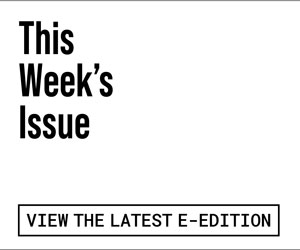by Tom Gogola
All over the North Bay in recent days, crab committees have been meeting, boards of directors have been discussing and nonprofit organizations have fretted over the question: What to do about our annual Dungeness crab feed?
The state delayed the opening of the Dungeness crab season indefinitely on November 5 when a potentially fatal neurotoxin, domoic acid, was discovered in the Dungeness and in a year-round red crab fishery, which was also shut down. This was very bad news for a $60 million California crabbing industry, and especially for the commercial crabbers who haul the pots, but the closure has also rippled to dozens of crab feeds planned in the North Bay in coming months.
Some organizations have come to rely on the fundraising power of the popular Dungeness crab—tickets in the $40–$60 range are often sold out months in advance—and there is real pain afoot if the crustaceans aren’t available in time for the events, many of which are held toward the end of the commercial crab season, in February.
“This is not chump change we’re talking about, but some serious bucks for some serious projects” says Petaluma Rotary Club president Gary Brodie. His organization hosts an annual February crab feed in conjunction with a big raffle that has raised up to $35,000 for a range of programs: An annual $8,000 set-aside for gifts for needy kids around the holidays and a $5,000–$8,000 check to support a local, free dictionary program for third-graders.
Brodie is hopeful that scuttlebutt about a season opener by early in the new year will bail out the crab season, even if the huge spike in demand could send the price through the roof. “At that point, we’ll find out if it’s going to reopen,” says Brodie, who owns an auto shop in Petaluma. “If it doesn’t, I’m sure we will replace the crab with some other food. We’re in wait-and-see mode.”
The Sonoma County Farm Bureau says it has been assured by its Bodega Bay crab wholesaler, the Tides Wharf, that come hell or high levels of domoic acid, there will be crab a-plenty at the organization’s February 6 event.
“People want the crab and want to know what we are doing,” says Marisa Ruffoni, a spokesperson at the Farm Bureau. “We’ve gotten a few calls to see if we’re going to stick to it.”
They are. The Great Sonoma Crab and Wine Fest is in its 27th year and draws 1,200 or more people a year, Ruffoni says. The feed is held to raise money for scholarship and agricultural-education programs, and features a gigantic inflatable Dungeness crab that hangs above crab-laden tables at Grace Pavilion at the Sonoma County Fairgrounds. Ruffoni says the worst-case scenario is that the Farm Bureau may need to purchase crabs from Washington state (where there is no domoic disaster), via their Bodega wholesaler.
“I have heard that some are trying to find crab from elsewhere, and I think that might be a wise backup plan,” says Jordan Traverso, a spokesperson at the California Department of Fish and Wildlife (CDFW), which shut down the Dungeness and rock-crab fisheries. Traverso says the CDFW is itself in wait-and-see mode. “I really can’t say how long this closure will last,” she says via email. “The California Department of Public Health is doing testing, and once they see the levels go down to the point that it is not a significant human health risk, they could be compelled to lift the health advisory. Then the Office of Environmental Health Hazard Assessment (OEHHA) could be compelled to change their recommendation to us regarding the closures. I really have no way of knowing how long that could take. We are operating from the recommendation of OEHHA.”
Other organizations have looked past the crab in their worst-case planning. “We were just saying how we’re going to have to do something else,” says Kim Hanson, chair of the Penngrove Social Firemen, which raises money for the local fire department. Hanson, whose son is a San Francisco crabber, says the organization is talking about a steak dinner in Penngrove Park as an alternative to its February crab feed.
This isn’t the organization’s biggest fundraiser, says Hanson, but adds that the Rancho Adobe fire department in Penngrove hosts a crab feed and fundraiser that it has come to rely on for purchasing equipment. The crab shutdown, she says, “will impact them greatly. They make around $10,000 a year and use it to buy critical equipment they need.”
In order to reopen the fisheries, state health officials need to see a two-week trend that would show that levels of the acid had dropped below 30 ppm. The OEHHA says it has been encouraged by the most recent tests undertaken by state health officials. “Thus far they remain above [30 ppm], but there has been some sign of improvement,” says Sam Delson, deputy director at OEHHA. “These crabs do process [domoic acid] through their system, but they have a slow metabolism.”
Time’s running out for the Novato Horsemen, which hosts an annual Valentine’s Day crab feed in February. “We haven’t made a decision, but we’ll have to make it by [this] week,” says Scott Colvin, a board member and past chairman of the organization’s crab committee. He’s not especially optimistic. “I don’t think we are doing it,” he says. Even if the season were to reopen, Colvin says, “the price of crab will be so astronomical—the numbers I’m hearing are up to $15 a pound.”
The Novato Horsemen event has been going on for at least 20 years, Colvin says, and worked with a broker in years past to supply the crab. “We’ve got to get on the phone with him,” he says. “This is a yearly deal, people call us and they expect us to do the crab. We’re kind of sitting here waiting and hoping for the best. It’s our first fundraiser of the year, and we usually make about $5,000 that we can put toward feed in our cattle program. We’re talking spaghetti, but we’re not going to make the money with that,” Colvin says.
As feed organizers fret, the state continues with its work as it emphasizes public safety. “We certainly sympathize with organizations that have a cherished tradition of holiday crab feeds,” Delson says. “We know that it’s a big tradition, and we certainly hope that the acid levels will reach a level where we can make a recommendation. I can’t say when that will be, and public health and safety is the overriding priority.”
The Bolinas Community Center is a relative newcomer to the crab-feed scene, having hosted two in recent years, but development director Randi Arnold says that the feeds quickly became the center’s leading fundraiser after its annual Labor Day blowout, netting $4,000 in 2013 and then about $14,000 the following year.
The center has already shifted gears to a blues-and-barbecue theme for its late January event, which, like all these events, takes months to organize and begins with contacting fishermen or fish brokers, and getting enough crab commitments to feed the crowd. The center sold 140 tickets to its last feed.
“We decided that it wasn’t worth the risk to put all that work into it if the crabs aren’t going to be edible,” Arnold says. “But we’re not set in stone. If by December 31 it is lifted, crab would be our preference.”
Traverso stresses that the state is sympathetic to the crab-feed conundrum but isn’t lifting the ban until it’s safe to do so for everyone. “It would be awful if a number of people got sick at a fundraising event due to domoic acid,” she says.
State Senator Mike McGuire has called a public meeting on December 3 to address the ongoing crab crisis, from 3pm to 6pm at the Steele Lane Community Center in Santa Rosa.








